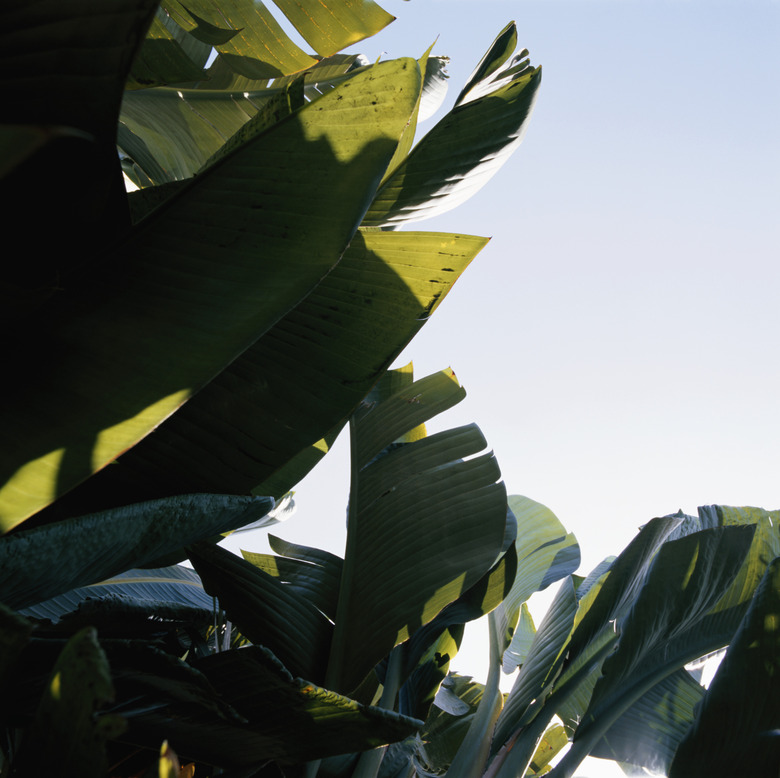How To Trim A Non-Blooming Banana Tree
As new banana (Musa) leaves grow from the center of the plant, the outside leaves get dry and turn brown, causing bananas to look ragged and unsightly. A few dead leaves won't affect banana plants, but they do detract from the lush, visual effect and can harbor insects, especially when growing outdoors. Bananas take a year or more to bloom in frost-free, tropical climates, but as houseplants, and in Mediterranean and temperate zone climates, bananas make ideal non-blooming foliage plants. Trimming non-blooming banana plants will keep your plants looking healthy and lush.
Step 1
Step 1
Select brown, dead leaves from outermost layers of the plant. Each banana leaf extends down the base of the plant. The lower part of each tightly wrapped leaf forms the sturdy, fleshy banana stalk.
- As new banana (Musa) leaves grow from the center of the plant, the outside leaves get dry and turn brown, causing bananas to look ragged and unsightly.
Step 2
Step 2
Cut the the leaf stalk where it branches away from the plant using a clean, sharp knife. Leave 1/2 to 1 inch of the stalk sticking out from the side of the trunk.
Step 3
Step 3
Cut broken leaves at the break point using sharp shears. Wind and animals can easily break the fleshy leaves. Once damaged, a banana leaf won't repair, but you can tidy up the plant to prevent further tearing.
Tip
Bananas grow in U.S. Department of Agriculture plant hardiness zones 5 through 11 depending on the species. Many bananas are tropicals that cannot survive any cold temperatures. Several species of hardy banana can survive hard frost at the root level, but the foliage will die back with the first killing frost. In spring, new growth will emerge from the roots. The Japanese banana (Musa basjoo), hardy to USDA zones 5, is an option for frost-prone areas. When growing a frost-hardy banana in a cold part of the growing region, cut back the whole plant 24 inches from the base. Use a tree saw to cut through the fleshy stalks. Spread a 4- to 6-inch-deep layer around the base of the stalk. In spring, pull back the mulch to expose the new shoots.
Tip
Always sanitize your pruning tools after trimming bananas and other garden plants. Fill a bucket with 3 parts water and 1 part bleach, then dip the cutting blades of each tool into the bucket for at least five minutes. Rinse the tools and leave them to dry before putting them away. Keep pruning tools away from young children and pets while they are drying to prevent injury.
Tip
If you are growing bananas outdoors, pick a spot out of the wind. Strong winds will shred the leaves to ribbons and can cause the whole leaf stalk to break.
Warning
Wear old clothes. Banana sap runs clear after the cut, but leaves a dark red stain on clothing.
Warning
Don't pull the leaf. Banana leaves really start far down the trunk, each wrapped leaf forms a layer of the stalk. Pulling off the leaves can expose the stalk and damage the plant.
Things Needed
- Knife
- Shears
- Ammonium sulfate
